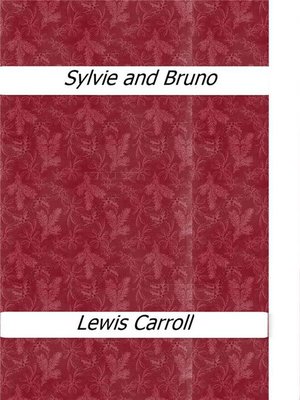
Sign up to save your library
With an OverDrive account, you can save your favorite libraries for at-a-glance information about availability. Find out more about OverDrive accounts.
Find this title in Libby, the library reading app by OverDrive.



Search for a digital library with this title
Title found at these libraries:
| Loading... |
Sylvie and Bruno, first published in 1889, and its second volume Sylvie and Bruno Concluded published in 1893, form the last novel by Lewis Carroll published during his lifetime. Both volumes were illustrated by Harry Furniss. The novel has two main plots: one set in the real world at the time the book was published (the Victorian era), the other in the fantasy world of Fairyland. While the latter plot is a fairy tale with many nonsense elements and poems, similar to Carroll's Alice books, the story set in Victorian Britain is a social novel, with its characters discussing various concepts and aspects of religion, society, philosophy and morality. Two short pieces, "Fairy Sylvie" and "Bruno's Revenge", originally appeared in Aunt Judy's Magazine in 1867. Some years later, in 1873 or 1874, Carroll had the idea to use these as the core for a longer story. Much of the rest of the novel he compiled from notes of ideas and dialogue which he had collected over the years (and which he called "litterature" in the introduction to the first volume).Carroll initially intended for the novel to be published in one volume. However, due to its length, it was divided into two volumes, published in 1889 and 1893. The novel is not nearly as well known as the Alice books. It was very poorly received and did not have many reprintings; modern commentators note that it lacks much of Carroll's characteristic humour. The poem The Mad Gardener's Song, widely reprinted elsewhere, is the best-known part of the book. The introductory poem contains a double acrostic on the name "Isa Bowman", one of Carroll's child friends.






